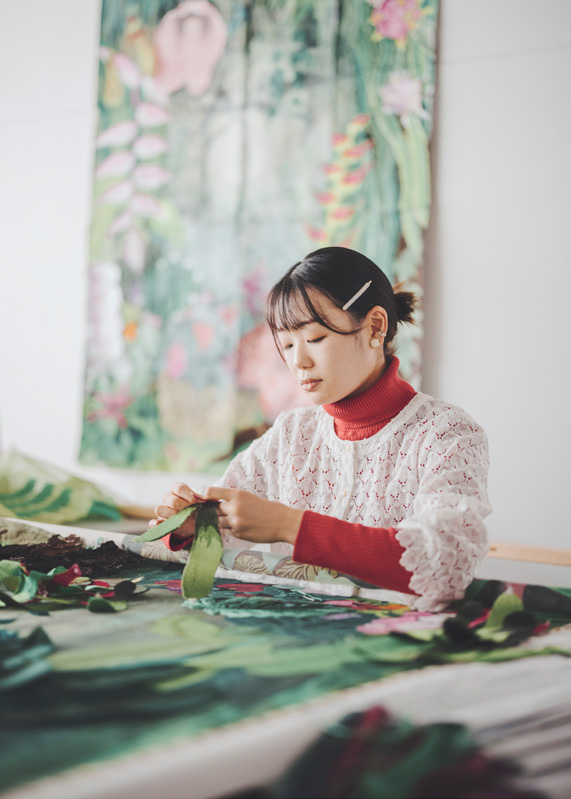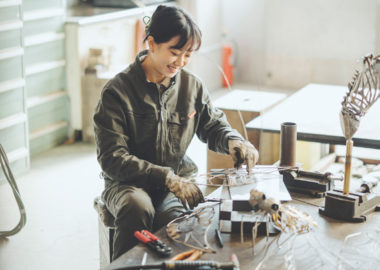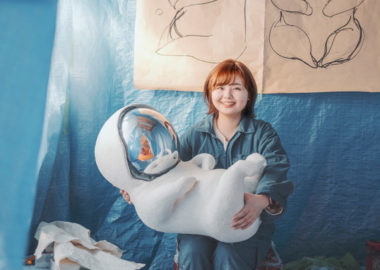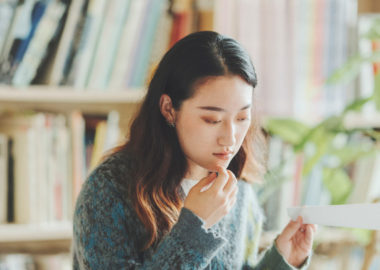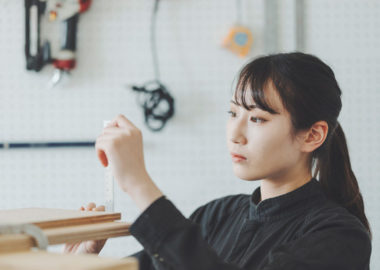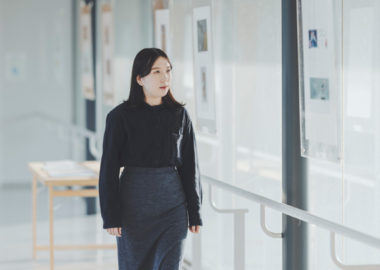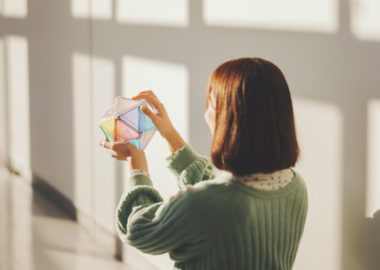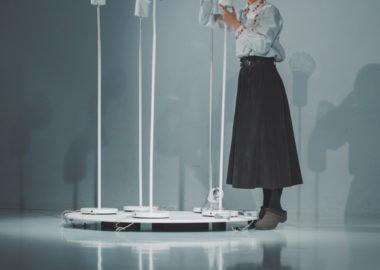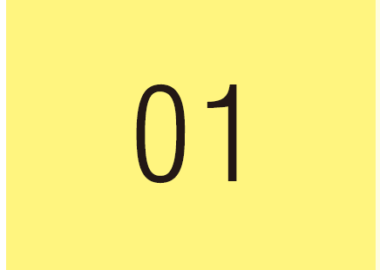Textiles, Ceramics and Glass
A compatibility of preserving tradition and creating modern works.
There are three major requirements in the work pursued in this concentration, the goal of which is to master the arts of either dyeing, weaving, embroidery, ceramics, or glass. These requirements are the acquisition of 1) technical skills and knowledge rooted in traditional practices, 2) creative imagination that is compatible with modern times, and 3) the ability to transform one’s ideas into form. Another emphasis of this concentration is the cultivation of design skills, which is the driving force that allows traditional crafts to be turned into moderns works. Tradition and innovation are equally important for those who engage in the creation of next-generation craftwork, and this concentration aims to develop people who can embody this mindset in their daily work.
Concentration in Textiles, Ceramics and Glass Website (Japanese)
Concentration in Textiles, Ceramics, and Glass Brochure (only in Japanese)
<Concentration in Textiles, Ceramics and Glass Curriculum>
First year: Learning the properties of materials in five fields
In the first year, students literally grasp the characteristics of materials through hands-on work in five fields: dyeing, weaving, embroidery, ceramics, and glass. They consistently work on their own with these materials. By doing so, they build expressive ability while harnessing material properties such as color, form, and texture.
Second year: Separating into two courses to enhance specialization
Students choose between Textiles or Ceramics and Glass and heighten their specialization. In the Textiles course, they learn traditional techniques of dyeing, weaving, and embroidery. In the Ceramics and Glass course, they learn the basic properties and applications of clay and glass. They also explore ways to apply traditional techniques to modern creations.
Third year: Dividing into five concentrations and creating with a conscious approach
Students select one of five concentrations, Dyeing, Weaving, Embroidery, Ceramics, and Glass, to further enhance their specialization. They deepen their creative practice in a single field while accumulating knowledge and techniques over time. By doing so they heighten their self-awareness as artists and designers and establish modes of self-expression ahead of the fourth-year graduation project.
Fourth year: Cultivating abilities for professional success
During the fourth year, students acquire the ability to create works that engage with society and to succeed as artists. For their graduation projects, multiple faculty members with highly specialized expertise offer guidance from various perspectives. Students come into contact with diverse viewpoints and find their own free and innovative paths of expression.
工艺专业
传统的继承和現在的创作双管齐下。
染、织、刺绣、陶、玻璃的至高境界的创作所需的大致可分为 3 个方面。它们是扎根于传统的技术和知识、适应现代的想象能力以及将想象变为实体的能力。此外,培养设计能力也是本专业的重点之一。它将成为将传统工艺升华为现代创作的推动力。对于下一代的工艺旗手而言,必须同时具备传统和革新。我们将以这种状态来培养日日以创作为念的创作人员。
<工艺专业的教学计划>
第一学年: 理解5种基本素材的性质。
染、织、刺绣、陶艺、玻璃工艺。在第一学年,学生在接触这5个领域的素材的同时理解它们的特征。学生在使用这些素材进行制作时,每个人都要单独承担从开始到完成全过程的制作,从而掌握有效地利用色彩、形态和质感等素材性质进行表现的方法。
第二学年: 分为两门课程,提高专业性。
学生从“纺织品”或“陶艺与玻璃工艺”中选择任一课程,提高自己的专业性。在纺织品课程中,学生将掌握染、织和刺绣的传统技法。在陶艺与玻璃工艺课程中,学生将学习黏土和玻璃造型的基础和应用。此外,学生还将摸索如何把传统技术运用到现代的创作中去。
第三学年: 分为五门课程,以高度的觉悟面对创作。
分为五门课程:“染”、“织”、“刺绣”、“陶艺”和“玻璃工艺”,进一步提高专业性。学生将充分利用时间不断积累知识和技术,并在其中的一个领域进行更深入的创作实践,提高作为艺术工作者、设计师的觉悟,朝着第四学年毕业制作的目标,确立自己的表达方式。
第四学年: 具备作为专业艺术工作者应有的能力。
在第四学年,学生将掌握创作具有社会意义的作品的能力、以及作为艺术工作者不断开展活动的能力。毕业制作时,拥有高水平专业性的多位教师将以不同的视点为学生进行指导。学生可以感受对事物的多样的看法,发现展开自由崭新的表达方式的秘诀。
공예 전공
전통의 계승과 현대의 창작을 두 축으로
염색, 직물, 자수, 도자기, 유리를 연구하는 이곳에서 창작에 요구되는 것은 크게 3가지입니다. 전통에 뿌리를 둔 기술과 지식, 현대에 통용되는 발상력과 그 발상을 형태로 만들어 갈 수 있는 능력입니다. 또한 본 전공은 디자인 능력 양성에 중점을 두고 있습니다. 이것은 전통공예를 현대의 창작으로 승화시키는 추진력이 됩니다. 차세대 공예를 짊어질 이들에게 전통과 혁신은 두 중심축입니다. 이러한 자세로 나날이 창작하는 제작자를 육성해 나갑니다.
<공예 전공 커리큘럼>
1학년: 5개 소재의 특징을 배운다.
1학년은 염색, 직물, 자수, 도자기, 유리 등 5개 분야의 소재를 접하면서 그 특징을 배웁니다. 이러한 소재를 사용한 제작은 일관적으로 혼자서 실시합니다. 이를 통해 색채, 형태, 질감 등과 같은 소재의 특징을 살리면서 표현하는 기술을 습득해 나갑니다.
2학년: 2개 코스로 나뉘어 전문성을 높인다.
‘텍스타일’과 ‘도자기·유리’ 중 하나의 코스를 선택해 전문성을 높입니다. 텍스타일 코스에서는 염색, 직물, 자수의 전통기법을 습득합니다. 도자기·유리 코스에서는 흙이나 유리 조형의 기초와 응용을 배웁니다. 또한 전통기술을 현대의 창작에 활용하는 방법도 모색합니다.
3학년: 5개 코스로 나뉘어 높은 의식으로 창작한다.
‘염색’, ‘직물’, ‘자수’, ‘도자기’, ‘유리’의 5개 코스로 나뉘어 한층 더 전문성을 높입니다. 시간을 들여 지식과 기술을 쌓아 나가면서 한 분야에서 더 높은 수준의 창작을 실천합니다. 작가 또는 디자이너로서의 의식을 높여 4학년의 졸업제작을 염두에 두고 자기표현의 기술을 확립해 나갑니다.
4학년: 프로로서 활동할 수 있는 힘을 기른다.
4학년은 사회와 접점을 가질 수 있는 작품을 만들어내는 힘과 작가로서 활동해 나가는 능력을 습득해 나갑니다. 졸업제작에서는 높은 전문성을 지닌 여러 명의 교원이 다양한 시점에서 지도합니다. 사물을 보는 다양한 시점에 접하면서 자유롭고 새로운 표현을 전개하는 방법을 찾아갑니다.
